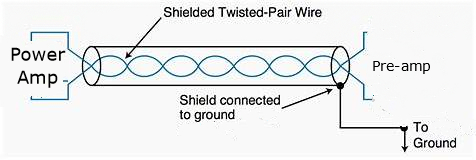Why is Shielding Important for Audio Cables?
11th May 2023
How do I Prevent Audio Cable Interference in my Hifi System?

Shielding audio cables from external sources of electromagnetic interference such as radio waves and other sources has become very common. People accept that shielding is a good thing because it improves the sound quality of a hifi system, but this is not necessarily true. It will certainly alter the sound you hear when shielding is added but that doesn't make it a purer signal or sound better.
If a hifi system is using low input voltages such as with a turntable cartridge then the audio cables need to be shielded to prevent low level external radiation causing problems such as hum.
With cables between CD and streaming sources, pre-amp, power amp, and speakers, matters are not so clear cut.
Shielding is a complex issue as this excellent article outlines and a one-size-fits-all approach will not work in the hifi world:
https://incompliancemag.com/article/things-you-may-not-have-heard-about-shielding/
A few basics about shielding and hifi cables:
- A shield does not automatically prevent external RFI from interfering with the signals inside an audio cable.
- The shield itself can create interference with the signal wires inside the cable.
- A shield adds to a cable's capacitance.
- How you terminate the shield is important.
- Shielding adds a certain character to the sound. For example, it can create a loss of agility to the music reproduction that we have noticed when designing our cables at Wire On Wire. Also, a shielded cable may not create as good a match between audio components as an un-shielded one.
For example, if the grounds between two audio components are at substantially different potentials, ground-loop currents can interfere with the sound. If this is the case how you attach the shield to the plugs is important. In this case, leaving one end of the shield un-terminated may give the best overall shielding performance, providing that shielding against high frequencies is not an issue, in which case the shielding may act as an antenna.
Shielding has its uses but when it comes to the best hifi sound, it is better to listen to different interconnects and decide which of them sounds better in your hifi system.

